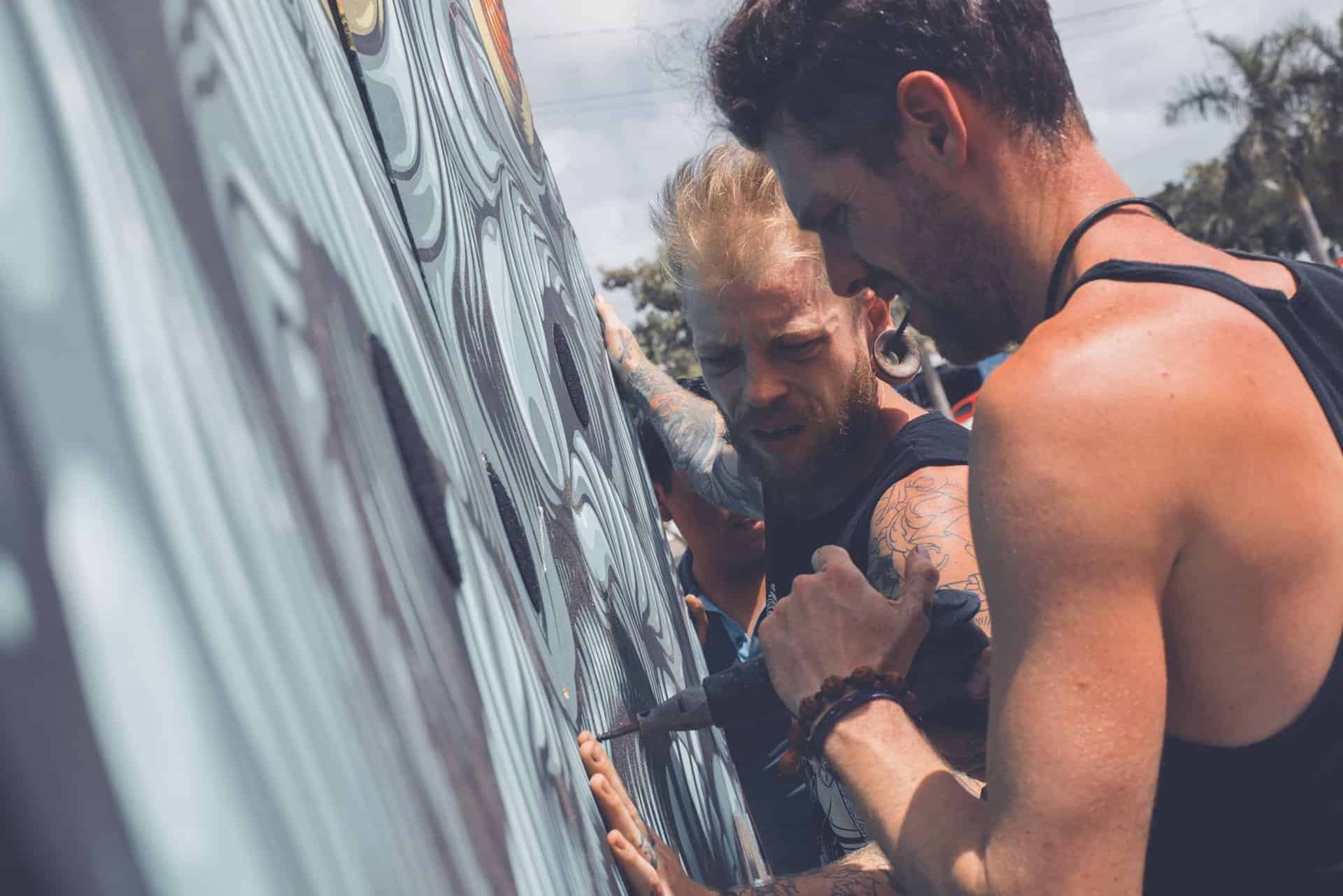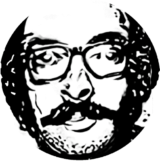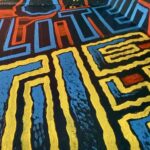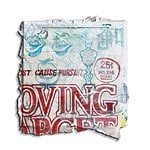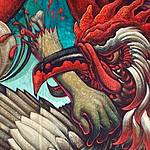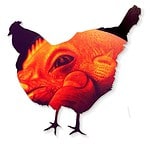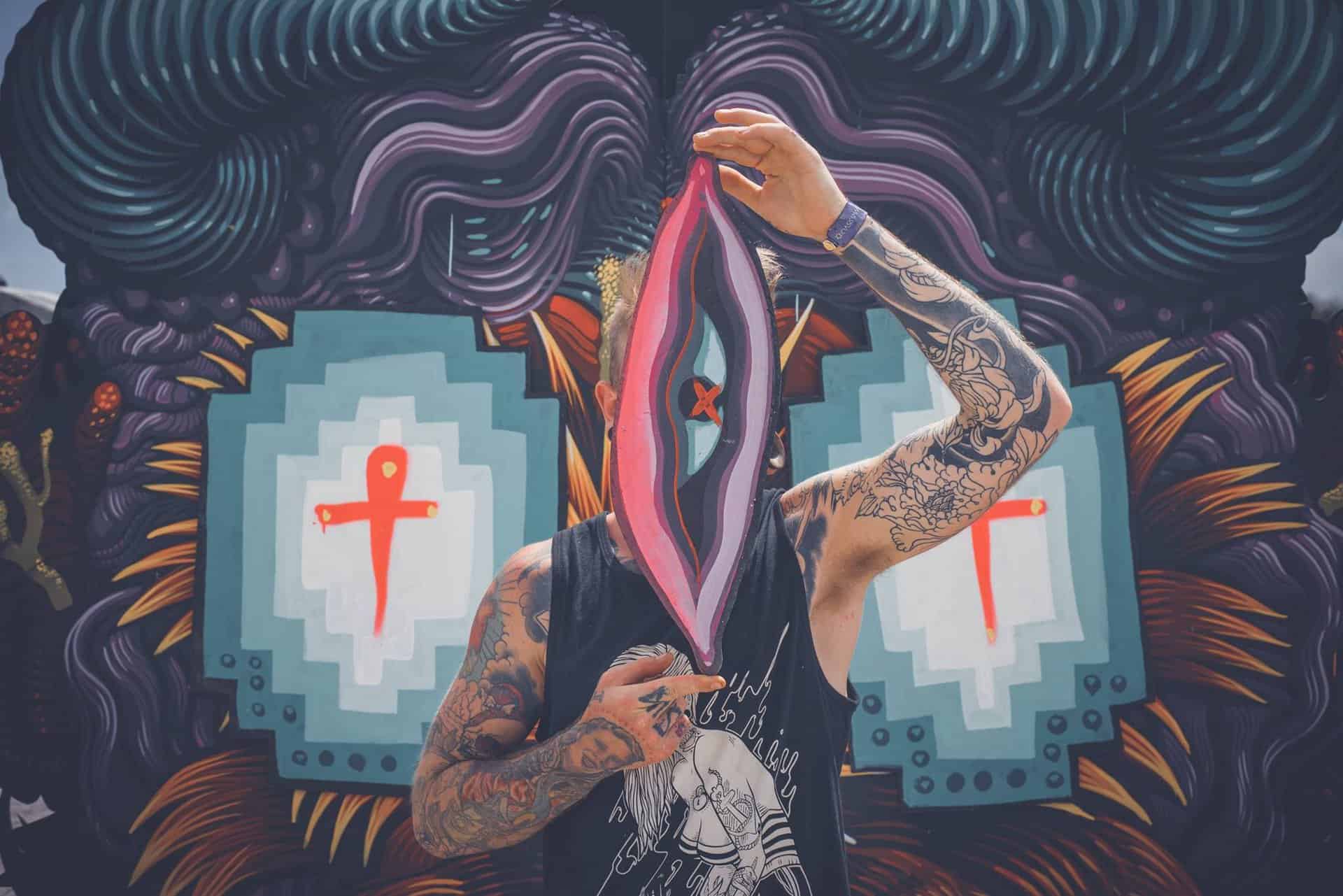
Jeremy shantz Collaborations
Jeremy Shantz Collaboration in Cancun, Mexico.
Shantz and I created this interactive series of collaborative works, modeled after the much-beloved children’s toy Mr. Potato Head.
Boldly psychedelic and somewhat grotesque, they evoke a circus-like sense of wonder and curiosity. These absurdly over-sized sculptural ‘masks’ are powerful symbols of the fluidity and complexity of identity, brought to life through the magic of shared creativity.
The archetype of shapeshifting spreads throughout the world, representing transformation, adaptability, and the idea of personal evolution.
Our personal sense of identity is a complex and multifaceted concept, referring to the characteristics, beliefs, qualities, and expressions that make us unique. These are qualities that most often evolve over time, playing crucial roles in how we perceive ourselves, and in turn, how others perceive us.
MASKS
In the context of theatrical performance and religious ceremony, masks are often used to conceal or protect identity, allowing an ‘actor’ to adopt a different personas.
Today, people wear certain kinds of masks in everyday life as a form of virtue signalling. They do so under the guise of personal and collective ‘protection’, and more importantly, so as to fit in with dominant social narratives.
We wear masks at times to hide our true feelings and intentions.
Conversely, masks can also reveal or express aspects of one’s self that may be hidden or suppressed. In this remarkably paradoxical way, masks free us from the constraints of societal expectations.
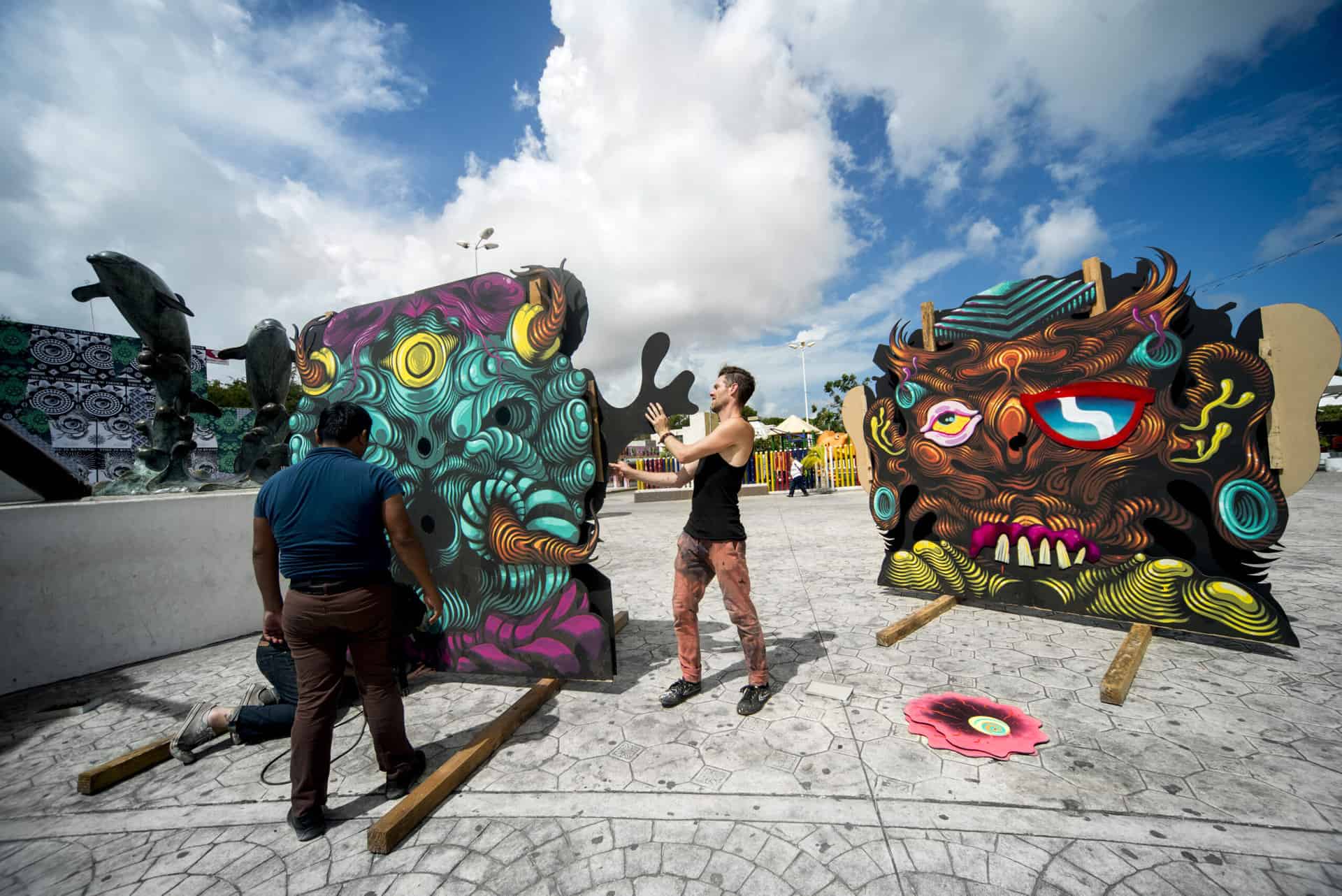
SHAPE SHIFTING
Changing the story of who we are and what we wish to become is possible. At times, doing so is necessary for our survival and progress.
These works are a reminder that change is a natural part of life. Learning to embrace transformation can lead to greater understanding, wisdom, and wholeness.
MR. POTATO HEAD
This iconic toy was conceived in 1949, the brainchild of toy inventor George Lerner. Lerner began sticking small plastic body parts into vegetables in order to endlessly delight the children in his life.
World War II had just come to an end. The times were understandably hard, which helps explain how a starchy tuber ended up as a child’s toy.
The mission and challenge for Jer and I was to use simple, easily available materials to delight and inspire children of all ages. This approach aimed to bypass barriers of race, language, and creed.
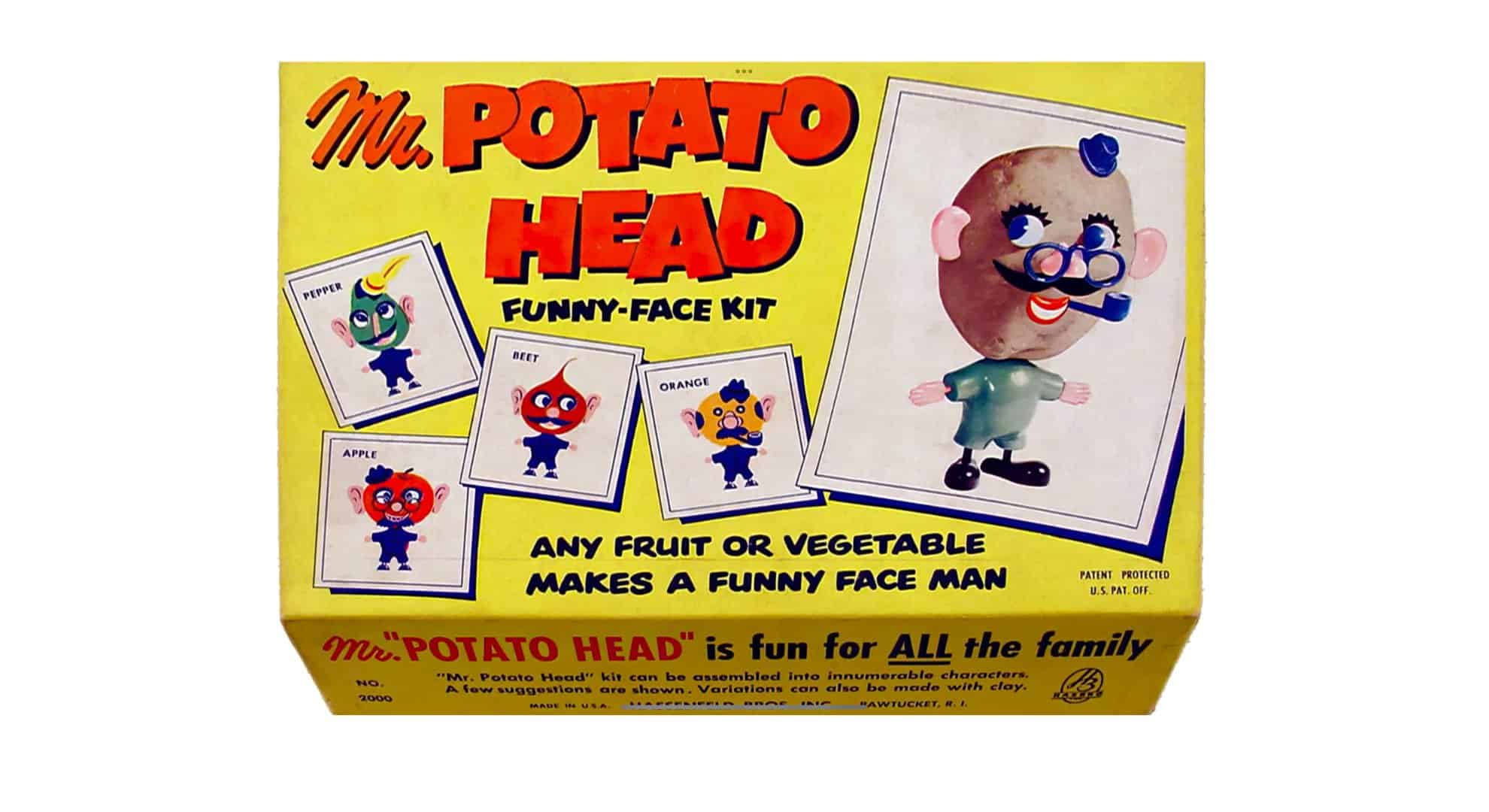
CANCUN INTERNATIONAL STREET ART FESTIVAL:
COLORING THE RIVIERA MAYA
World Art Destination (WaD) addresses Quintana Roo’s growing cultural needs in its emerging art industry.
It aims to create a stronger sense of social identity as a creative destination throughout Mexico.
This event was their second year in a row, taking place from February 21 – 28, 2015.
30 artists explored their vision of Cancun. They accomplished this through murals (17), installations (14), graffiti (4), and urban public interventions (7).
Here’s a map of the various works of public art that went up, if any still exist.
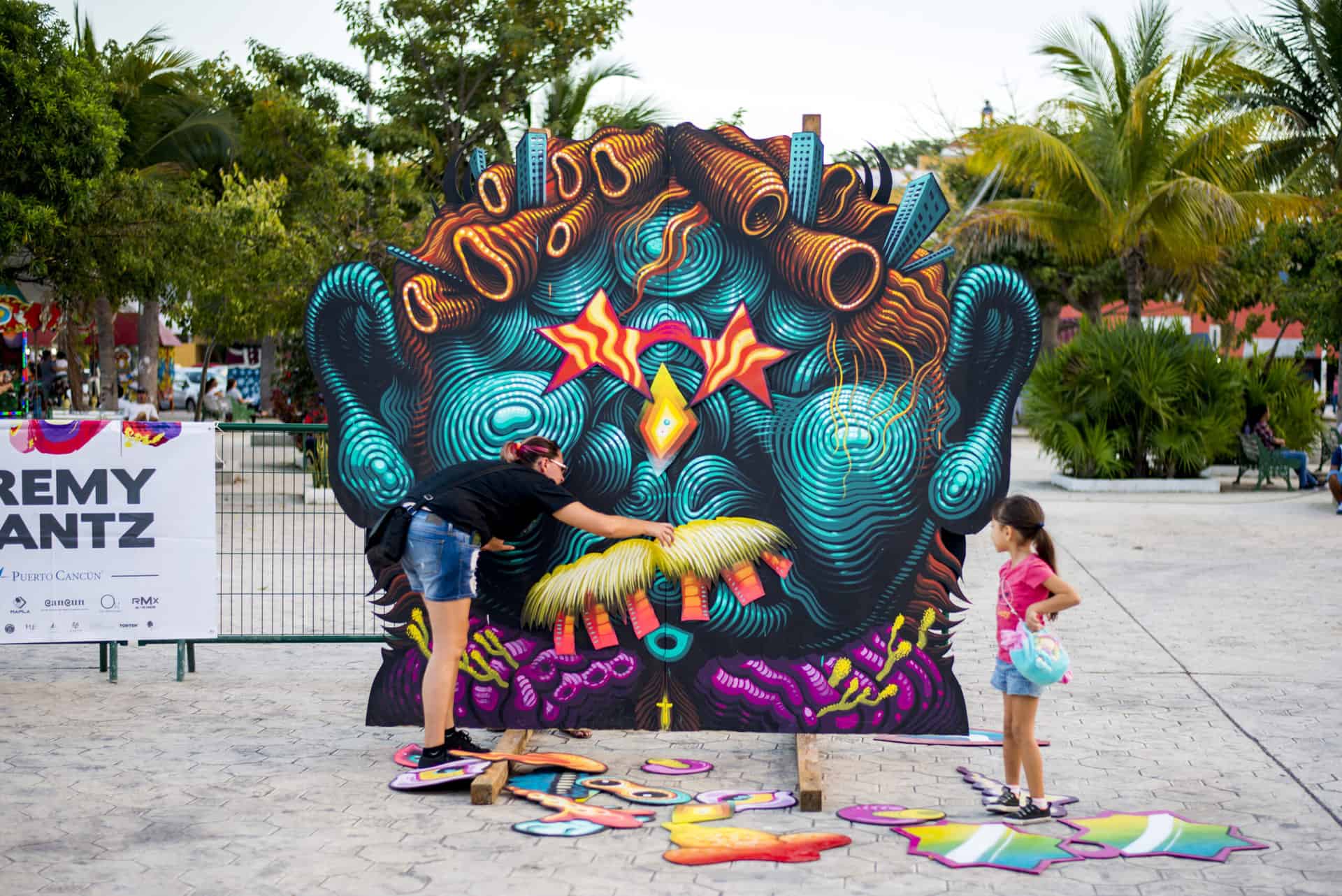
CANCUN — THE ISLAND OF LONELY MEN
A relatively very young city, its history is nothing short of remarkable.
Starting on January 23, 1970, the government began developing an entirely planned city to foster tourism through government-sponsored resort development.
Mexicans created it in the 20th century, not Spaniards during the Counter Reformation of the 16th century. This makes Cancun the only city in Mexico designed entirely by Mexicans (on the brilliant drafting table of Oscar Niemeyer). A mere 50 years later, and it has become home to over a million people from around the world.
It is a city whose cultural identity — beyond the tourism industry — is still in relative infancy. It gets to be what folks like WAD make it to be.
This made for fertile creative grounds in this act of shared creativity with Jeremy, one of my favorite collaborators.
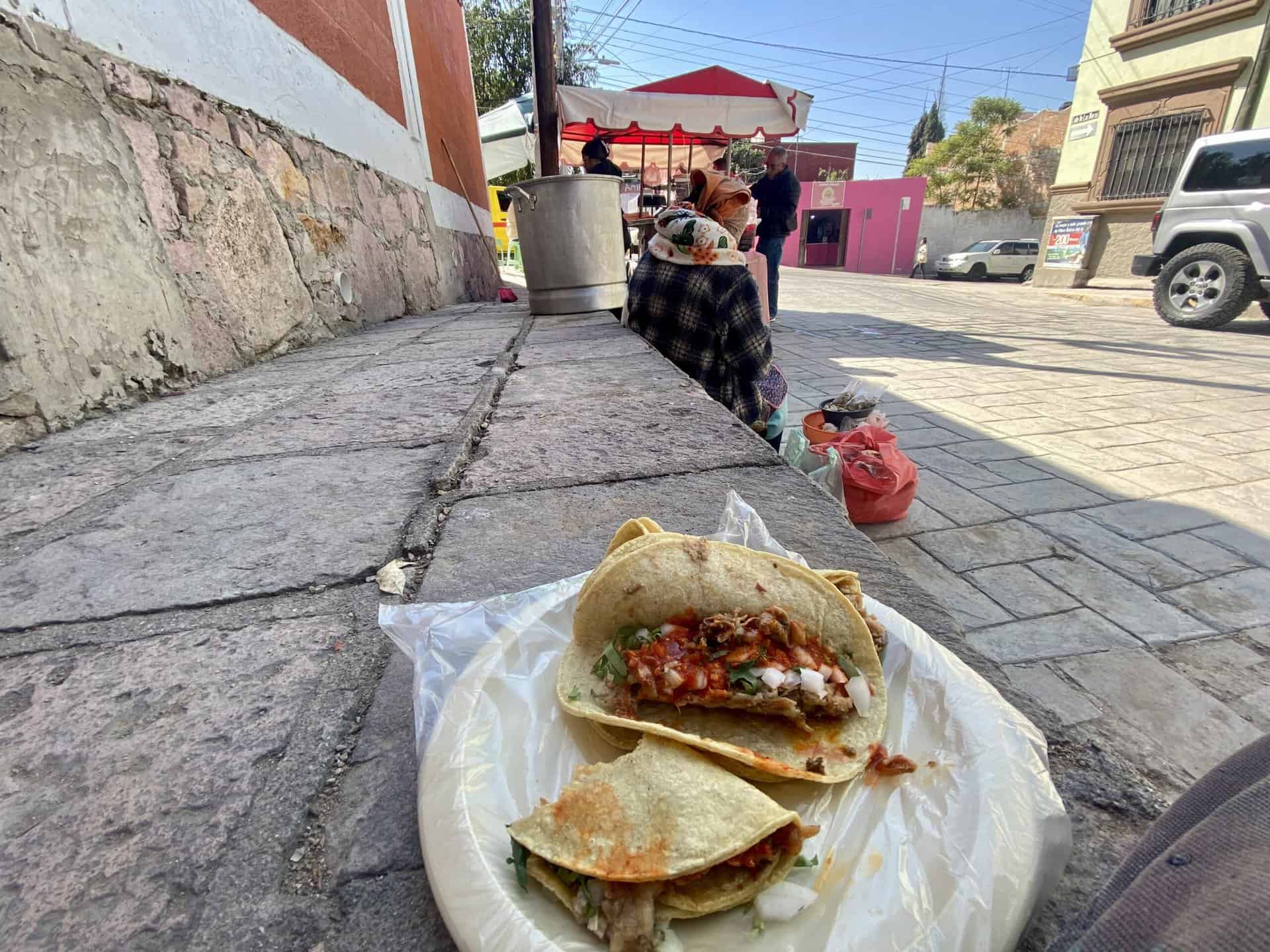
TACO MONEY
As evening crowded in around the park, so did the locals. Long lines formed around a small table Jer and I set up one night, holding only a simple, handwritten sign:
”UGLY PORTRAITS — 20 PES0S”
We worked on small, postcard pieces of paper stained in advance of the session with brightly coloured water based inks. Neither of us excel at portraits, and as such we could live by our promise of theirs being ugly.
Everyone had a blast, and, of course, there were more tacos than anyone could count.
I deeply honoured by these ongoing trips to Mexico, shaping part of my own ever-shifting cultural identity. It’s enriching to be in a culture valuing personal relationships and elder wisdom, shaping our identities.
